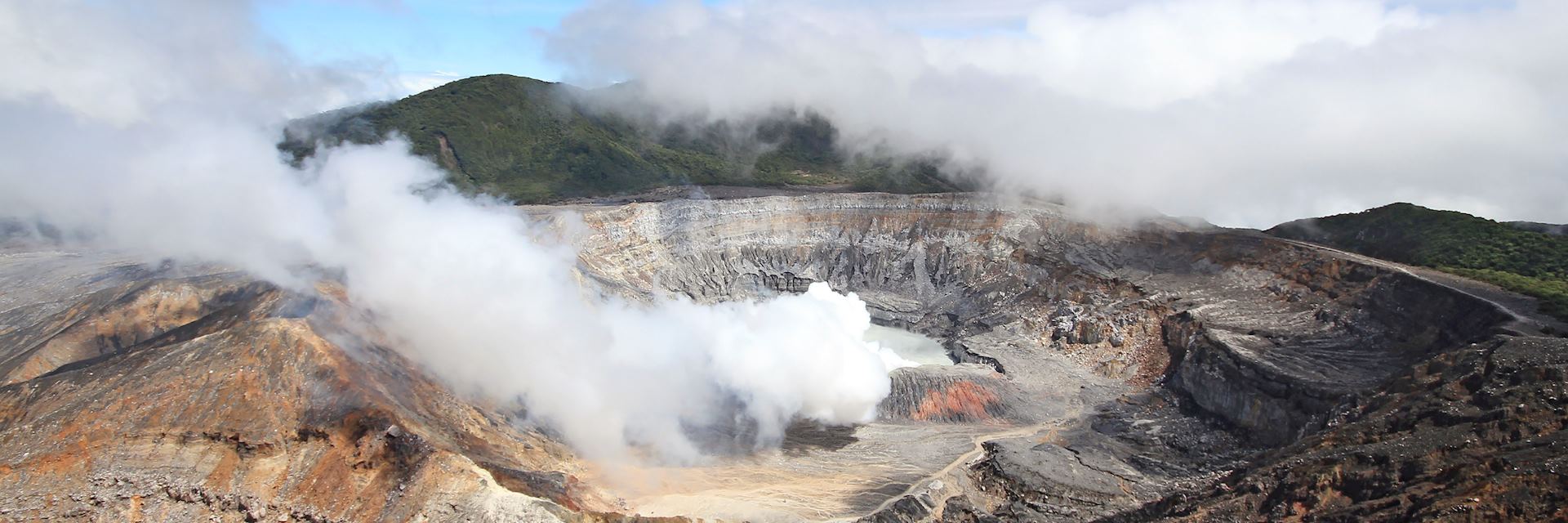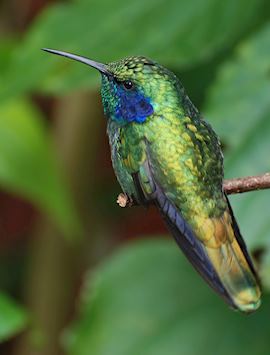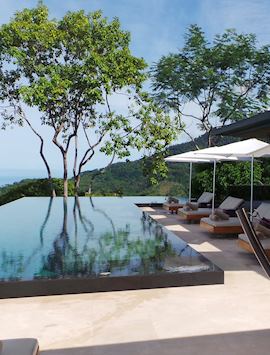By Audley specialist Carolyn
If you’re coming to this article ready to find out about Costa Rica’s five-star hotels and luxury resorts, I need to stop you here. That’s not to say that luxurious accommodation choices don’t exist in Costa Rica, it’s just that the real luxury of visiting comes from the simple pleasures you find here.
I lived for a number of years on the Nicoya Peninsula, and I soon discovered the true meaning of luxury in Costa Rica. I forgot to turn on my phone for days, walked everywhere barefoot and often took my hammock down to the beach for sunset. In the evenings, I’d join the locals cleaning the driftwood from the shore to build bonfires on the beach. As the sun drifted downwards, we settled down to watch the sky turn from orange to red.
A luxury holiday in Costa Rica is being woken by monkeys calling, and not an alarm clock. It’s a ‘barefoot luxury’ where your hotel might only be reachable by boat and you can ‘moon-bathe’ in a hot spring. And, in a small country that’s ecologically pristine, it’s about privileged access to wildlife and nature like no other place I’ve experienced.
My top alternative luxury experiences in Costa Rica
Explore the waterways of Tortuguero

Reached only by plane or boat, a few nights in Tortuguero National Park sets the tone for rustic luxury in Costa Rica. Getting to my hotel through mangrove swamps and canals, I felt like an extra on the set of Jurassic Park. Monkeys were calling across the treetops and caiman casually watched our boat from the shore.
The tropical vegetation masks and reveals birdlife from more familiar herons to toucans who sit in the tree canopy. I enjoy staying at the small Manatus Lodge, where you can sit out on the deck overlooking the waterways and listen to the orchestra of jungle calls. This is the only lodge in the national park that comes close to luxury in the traditional sense, with its air-conditioned cabins and à la carte dining.
Soak under the stars in a hot volcanic spring

The volcanic Arenal region is known as a hotspot for activities, such as traversing canopy walkways, horse riding and rafting.
It’s also an area of geothermal activity and hot springs, and dusk is a lovely time to slip into a hot spring pool. Some hotels have their own pools, or you can visit a complex in town.
In Costa Rica, night arrives so quickly it’s as if someone’s turned out the lights when the sun dips behind the horizon. At this point, you’ll discover a very different environment to the day. Bats swoop overhead and crickets chirp unseen in the shadows. I like to think of lying back in the thermal water and looking up into the darkness pinpricked with stars as ‘moon-bathing’.
Visiting Arenal also allows you to stay in one of the most luxurious hotels in Costa Rica, Nayara Springs. Each room has its own plunge pool, fed by the springs. With four-poster beds and views of the near perfectly conical Arenal Volcano on a clear day, Nayara Springs is set in the midst of a tropical forest where the only interruption comes from the playful howler monkeys.
Hike to the electric blue pool of Rio Celeste

North of Arenal, Tenorio National Park is also defined by its volcanoes. But it’s more remote and, because of this, quieter.
Deep in the park, the course of the Rio Celeste is broken by a 65-foot drop and the river becomes a waterfall, crashing into a pool below before continuing its journey. Sulphur and calcium carbonate deposits in the volcanic rock turn the water the sharpest of electric blues.
Taking a hike through the national park is the main attraction of visiting the Tenorio region. As well as the phenomenon of the pool’s blue water, you can also see a variety of endemic plants and birds.
By far the most luxurious accommodation here is the Rio Celeste Hideaway. Like most hotels in Costa Rica, it’s small, remote and still except for the sounds of the rainforest. Standing in the outdoor shower with the foliage peeping through and the calls of the monkeys overhead pretty much sums it up.
Spot hummingbirds in the cloudforest

Straddling the Cordillera de Talamanca mountain range that runs through the middle of the country, Costa Rica’s cloudforests offer a totally different experience to elsewhere in the country, in their climate, landscape and wildlife.
Cool air from the Pacific and warm air from the Caribbean rise to meet over the range, creating the vast swathes of clouds, hence the name. Within this vast ecosystem that runs almost the length of Costa Rica’s spine, I’d suggest visiting the Bajos del Toro area, 90 minutes from San José. It’s an altogether quieter experience than you’d find in, say, Monteverde Cloud Forest Biological Preserve.
Walking along the trails through a cloudforest is like exploring an enchanted wonderland. Moss doesn’t just grow on the trees, it completely shrouds them, dangling down in tendrils with orchids sprouting out of it on the branches.
The plant life you encounter in the cloudforests is particular to the conditions, as is the birdlife. Vast populations of hummingbirds inhabit Costa Rica’s cloudforest reserves and you’re sure to see these tiny birds and hear the bee-like buzz of their wings, flapping at up to 80 times a second. To give an idea of how different the cloudforest climate is, compared with the parks at lower elevation, you want to pull on a sweater here not peel off the layers.
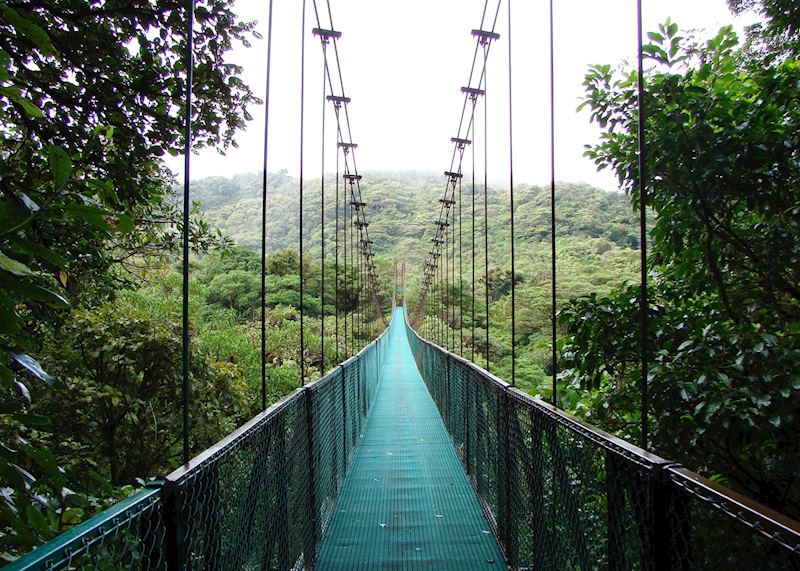
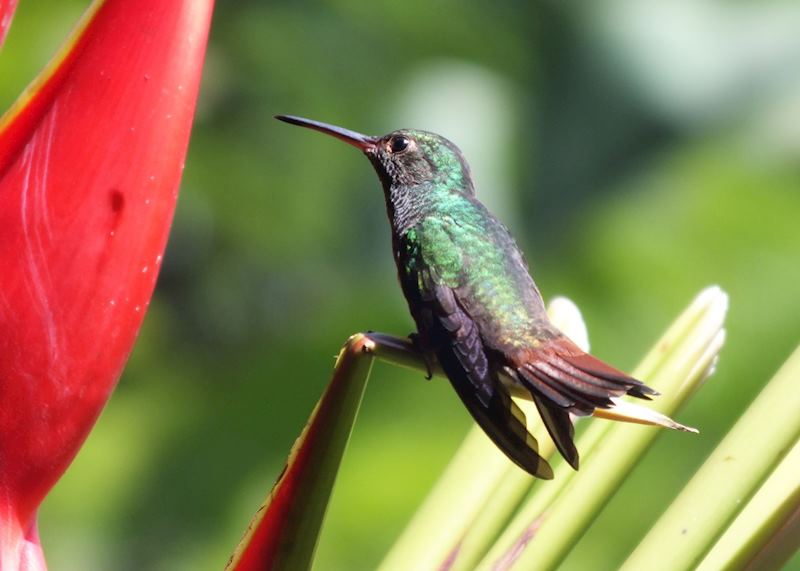
While it’s possible to explore the cloudforests independently, my advice would be to use a guide. As a client of mine commented, "you wouldn’t see 95% of the wildlife without one". Just knowing the call of the bellbird, the likely nesting sites of the resplendent quetzal, or that you’re likely to find a tiny frog living under a particular leaf type can make such a difference to your appreciation of the cloudforests.
A secluded sanctuary, the El Silencio Lodge near Bajos del Toro is a wonderful place to stay in the cloudforests. After a day exploring, I’d return to my room to find the private hot tub warmed ready for me. On my first visit to El Silencio I was struck by the incredible freshness of the food, which is grown organically in the lodge’s allotments. Try the local staple, casado, which is simply rice, beans, fried plantain, scrambled egg and chicken.
Escape everything on the Osa Peninsula

While Costa Rica’s wildlife is a constant throughout the country, it’s at its richest on the Osa Peninsula. Reached by light aircraft and 4x4, nature claims the spotlight in this secluded destination, which juts out into the Pacific from Costa Rica’s southwest coastline.
If you can, stay at Lapa Rios, an ecolodge set on a hillside above the ocean in a private nature reserve. Staying here gave me one of my best wildlife experiences (one of those occasions where you just don’t know what to look at next).
Standing on the balcony of my casita, or bungalow, I spotted a group of macaws in one tree then, successively, toucans in another, and a squirrel monkey with its babies on its back darting from branch to branch on another. As they competed for my attention, from under the bungalow popped an agouti (a rabbit-sized mammal) with its baby.
Lapa Rios is one of the Osa Peninsula’s most luxurious lodges: rooms are comfortable, spacious and sport four-poster beds, and a cup of coffee is placed by your door each morning. But, in my mind, its true appeal lies in its location, surrounded by the jungle that tumbles down the hillside to the beach and the crashing waves.
You’d be forgiven for splitting your time between your balcony and the pool, given the bird spotting opportunities they provide. But I’d make time for a guided walk to one of the nearby waterfalls, spotting butterflies such as the palm sized blue morpho, along the way.
A note on booking
- Many of Costa Rica’s hotels are small, and I advise booking at least nine months to one year in advance.
- Costa Rica’s high season runs from Christmas to Easter. To avoid this busier time, I like to travel in November or December when the summer rain has replenished the waterfalls and turned the country a vibrant green.
Start planning your luxury trip to Costa Rica
Start thinking about your experience. These itineraries are simply suggestions for how you could enjoy some of the same experiences as our specialists. They’re just for inspiration, because your trip will be created around your particular tastes.
View All Tours in Costa Rica
